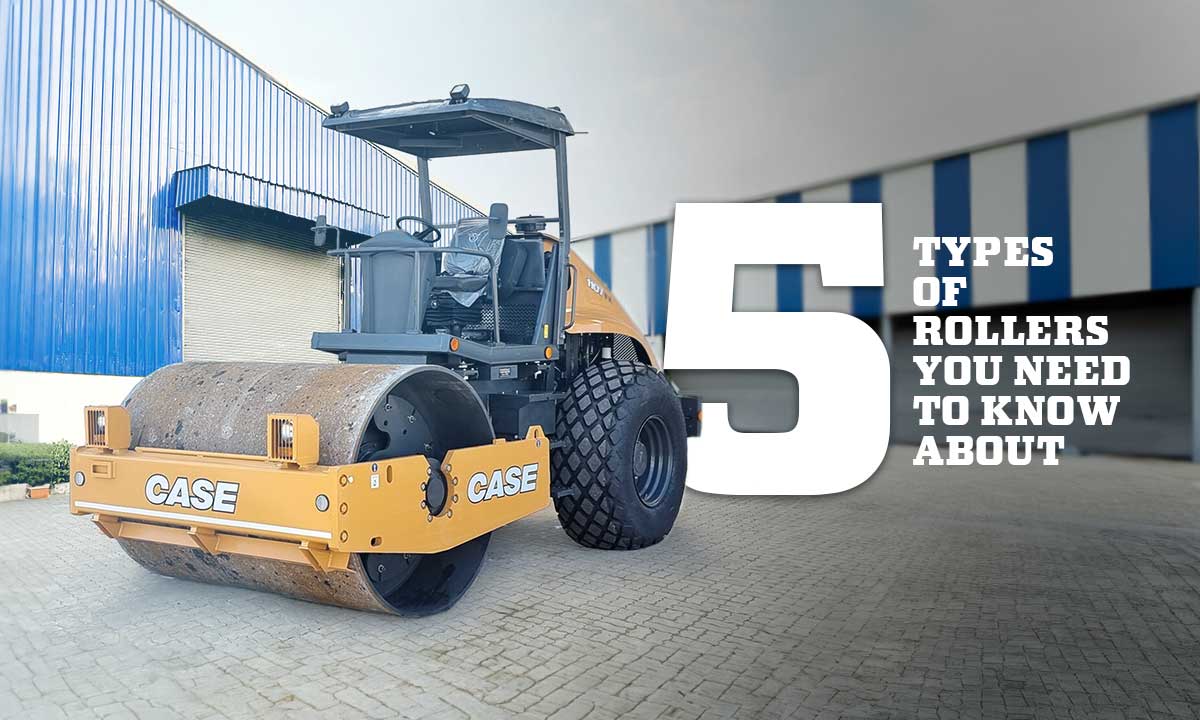
Choosing the right equipment for a construction job is important to secure the best results. Compaction equipment is crucial to use on hardened surfaces and provides a stronger foundation for roads and buildings.
Compact surfaces are required for road construction and building construction. This is where construction rollers are used to expedite the compaction process and provide stable land to work on.
To ensure that you have the right roller for your project requirements you should be aware of the various types of rollers now available on the market. This will give you the information you require to choose a suitable roller
What are the five common types of rollers?
Even though there are several kinds of rollers available on the market. Given below are five common types of rollers used for construction projects: –
Static Rollers
Static rollers are also known as smooth-wheeled rollers. They are one of the most common types of rollers that can quite often be seen at road construction as well as general construction sites.
They are further categorized into single drum rollers and double drum rollers: –
- Single Drum Rollers: –It also goes by the name three-wheeled rollers, Padfoot rollers, or smooth rollers. It features a steel drum in the front and two wheels in the back. They are suitable for tight spaces because they are comparatively smaller than double drum rollers.
- Double Drum Rollers: – They are heavier than single drum rollers. Therefore, they are expensive and slightly more challenging to maneuver. They are suitable for open spaces as they can compact surfaces faster since each pass compacts the surface twice.
Vibratory Rollers
Vibratory rollers are equipped with a smooth wheel roller along with a vibrating component. They can compact surfaces more efficiently. The vibration expedites the compaction process while the roller moves over the surface.
They are often used for compacting granular bases, crushed rock, gravel, and asphaltic concrete. They are quite often sold by manufacturers as vibratory roller models instead of non-vibratory smooth wheel roller models.
Sheepsfoot Rollers
They are also known as padfoot rollers and tamping rollers. They can be easily identified as they are equipped with raised lugs called “feet” on the roller drum. This provides a tamping action on the surface.
The feet ensure the change to the surface area of the roller drum, which enables the roller drum to put more pressure per square inch.
This roller ensures to increase the pressure on the feet as needed by filling the drum with wet sand as well as other materials. They are typically used with silty or heavy clay and cohesive soil surfaces.
Grid Rollers
Grid rollers can be identified by their steel bars arranged in a grid pattern on the drum. This applies high-contact pressure to the solid.
They are typically used for compacting coarse soil and working on the subgrade and sub-base road construction projects.
They are usually towed behind another machine such as a tractor or a truck.
Trench Rollers
Trench Rollers are also known as multipurpose compacts. They perform well in cohesive soil types that can be extremely difficult to compact. They are maneuvered by a remote control without an operator sitting or standing on the machine while it moves.
They can compact high moisture content in clays by making use of power compaction energy and the kneading effect from their padfoot drums
Also, they are commonly used in the fields of pipeline construction, commercial development, residential and industrial development, structure backfill work, confined workspaces, electric and cable installation, and dumpsite and landfill job sites.
How to choose the optimum road roller?
As mentioned above rollers differ in size, structure, and purpose. This is why you should figure out what roller equipment is best for the project. Consider the following factors while choosing the optimum roller: –
- The size of the area.
- The budget
- The type of material that needs to be compacted
- The site layout
- Transportation of the roller to and from the job site.
Choosing the right roller by understanding its types and functions is crucial to your construction project. Use the guide above to choose the appropriate roller in the market.

Post a Comment